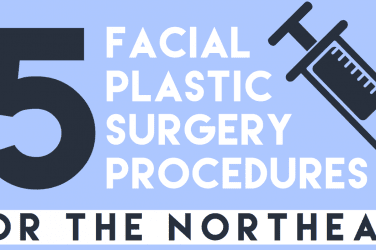Hyperbaric therapy, once a niche medical treatment, has garnered significant attention for its broad-ranging therapeutic potential. This advanced method, known for enhancing the body’s natural healing processes through increased oxygen levels, is gaining prominence in addressing complex medical conditions and promoting overall wellness.
The Fundamentals of Hyperbaric Therapy
At its core, hyperbaric therapy involves breathing pure oxygen in a pressurized environment, typically a hyperbaric chamber. This process significantly increases the amount of oxygen in the blood, which can accelerate the healing of damaged tissues, fight infections, and improve various bodily functions.
Principles and Mechanics
- Oxygen Absorption: Under increased pressure, the body’s tissues absorb more oxygen than under normal atmospheric conditions, facilitating faster recovery and regeneration.
- Pressure Environment: The pressurized setting of the hyperbaric chamber is crucial for enhancing oxygen delivery to the body’s organs and tissues.
Physiological Effects
- Enhanced Healing: The surplus oxygen can dramatically speed up the healing process of wounds, especially those hindered by diabetes or radiation therapy.
- Anti-inflammatory Response: Hyperbaric therapy has been shown to reduce inflammation, which is a root cause of many chronic diseases and conditions.
Historical Evolution of Hyperbaric Therapy
Tracing back to the 17th century, hyperbaric therapy has evolved from treating diving-related illnesses like decompression sickness to a broader application in modern medicine. Its development over the centuries reflects a growing understanding of its benefits, leading to more sophisticated and targeted uses in clinical settings.
Advances in Hyperbaric Therapy Research
Recent research has unveiled new dimensions of hyperbaric therapy, extending its applications beyond traditional boundaries. Studies have shown its effectiveness in treating neurological conditions, enhancing cognitive function, and even showing promise in anti-aging studies. These advances are pushing the frontiers of how hyperbaric therapy can contribute to holistic health and recovery.
Cutting-Edge Applications
Innovative uses of hyperbaric therapy are emerging, with research supporting its potential in treating conditions like stroke recovery, traumatic brain injuries, and certain degenerative diseases. The therapy’s ability to enhance oxygen supply and promote neural regeneration is at the heart of these groundbreaking applications.
Clinical Applications of Hyperbaric Therapy
Hyperbaric therapy has a broad spectrum of clinical applications, treating a range of conditions from wound healing to serious infections.
- Wound Healing: Particularly effective in treating non-healing wounds, such as diabetic foot ulcers, by stimulating blood flow and tissue repair.
- Infection Control: Helps to combat anaerobic bacteria and enhances the body’s immune response to infections.
Patient case studies often highlight dramatic recoveries and improvements, underscoring the therapy’s efficacy in real-world medical scenarios.
The Hyperbaric Therapy Experience
Patients undergoing hyperbaric therapy can expect a unique treatment experience. The sessions, which usually last between 60 to 120 minutes, involve resting in a specialized chamber where atmospheric pressure is increased to facilitate higher oxygen absorption.
Preparation and Process
Before treatment, patients are briefed on the procedure, safety protocols, and what to expect during the session. The experience is generally comfortable, with many patients relaxing or even sleeping during the process.
Aftercare and Follow-Up
Post-treatment, patients might feel rejuvenated, but a course of multiple sessions is often recommended to achieve the best therapeutic outcomes. Follow-up care and monitoring are crucial to assess the therapy’s effectiveness and make any necessary adjustments.
Insights from the Field
Leading medical experts, including those specializing in hyperbaric medicine, emphasize the transformative potential of hyperbaric therapy. Insights from clinical practice and ongoing research suggest a growing recognition of its benefits across various medical disciplines. For instance, hyperbaric therapy insights by Aviv highlight its role in enhancing cognitive functions and improving quality of life for patients with age-related conditions.
Expert Perspectives
Medical professionals at the forefront of hyperbaric research advocate for its broader application and integration into comprehensive treatment plans. They note the therapy’s ability to significantly improve patient outcomes, especially in cases where traditional treatments have plateaued.
Challenges and Considerations in Hyperbaric Therapy
While hyperbaric therapy is a powerful treatment modality, it comes with challenges and considerations that need careful management.
Accessibility and Cost
One of the primary concerns is the accessibility of hyperbaric therapy, as it requires specialized equipment and trained personnel. Additionally, the cost of treatment can be prohibitive for some patients, making it less accessible to a broader population.
Clinical and Ethical Considerations
Determining the appropriate candidates for hyperbaric therapy involves careful clinical evaluation. Ethical considerations also play a role, especially in balancing the therapy’s potential benefits against risks and patient expectations.
The Future of Hyperbaric Therapy
The trajectory of hyperbaric therapy is promising, with ongoing research expanding its potential applications and enhancing its efficacy. The integration of new technologies and treatment protocols is expected to further elevate its role in medicine.
Innovation and Research
Continued innovation and research are crucial for uncovering new therapeutic avenues and optimizing treatment protocols. The potential for hyperbaric therapy to contribute to regenerative medicine, neurorehabilitation, and chronic disease management is particularly exciting.
Conclusion: The Expanding Horizon of Hyperbaric Therapy
Hyperbaric therapy, once confined to treating diving-related illnesses, has blossomed into a multifaceted treatment option with vast potential in modern medicine. Its ability to enhance the body’s natural healing processes through increased oxygen delivery has made it a valuable tool in treating a wide range of conditions.
Summarizing the Potential
The journey of hyperbaric therapy from its initial applications to its current role in medical treatment highlights its versatility and effectiveness. With each patient’s success story, the therapy’s credibility and recognition continue to grow, supporting its integration into more holistic treatment plans.
The Road Ahead
The future of hyperbaric therapy looks promising, driven by continuous research, technological advancements, and a deeper understanding of its therapeutic benefits. As we delve further into its potential, the therapy is poised to become an integral part of broader medical practices, offering hope and improved outcomes for patients facing diverse health challenges.
Hyperbaric therapy represents a unique convergence of tradition and innovation in medical science. As research progresses and its applications expand, it will undoubtedly continue to be a critical element in the evolving landscape of healthcare solutions.








Show Comments